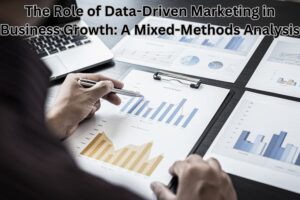Description
Exploring the Use of Machine Learning in Financial Forecasting: A Multi-Method Approach
Abstract
Machine Learning algorithms assess enormous volumes of data to deliver accurate predictions. ML technology has the option to create financial figures that accurate than traditional procedures. However, it is a significant collection of information sources. For example, news stories, online entertainment patterns, and market estimation. This study explores the purposes of ML strategies in financial prediction to work on the accuracy and feasibility of economic results and market pattern forecasts. The complexity of financial business sectors makes it challenging for predictable forecasting algorithms to distinguish designs and non-linear associations in huge datasets. Although gaining from past information and adapting financial circumstances, ML could build the precision of financial evaluations.
Furthermore, this study examines economic pointers, stock costs, and market unpredictability using ML strategies. For instance, this includes support vector machines, decision trees, and intelligence organizations. Research makes use of quantitative data investigation and expert gatherings as two multi-technique approaches. Moreover, it provides exhaustive data on ML likelihood in financial establishments. Whereas in the quantitative step, such financial facts are used by models to evaluate and forecast how different ML algorithms work. In the qualitative section, study examines data scientists and financial inspectors. Presently, study gathers facts on results, difficulties, and problems of utilizing ML in the financial area.
In addition, the study presents the benefits and difficulties of utilizing ML in financial forecasting. The outcomes offer an understanding of how ML approaches might be utilized to work on accuracy, decrease risks, and develop financial businesses. Therefore, expectations made by ML calculations might be more precise than traditional models. Besides, it uncovers complex connections inside information. Finally, the capability of machine learning to process enormous volumes of data rapidly and provides assumptions.
Read more about the topic
Use of Machine Learning Techniques in Financial Forecasting
View Other Projects on Artificial Intelligence








Reviews
There are no reviews yet.